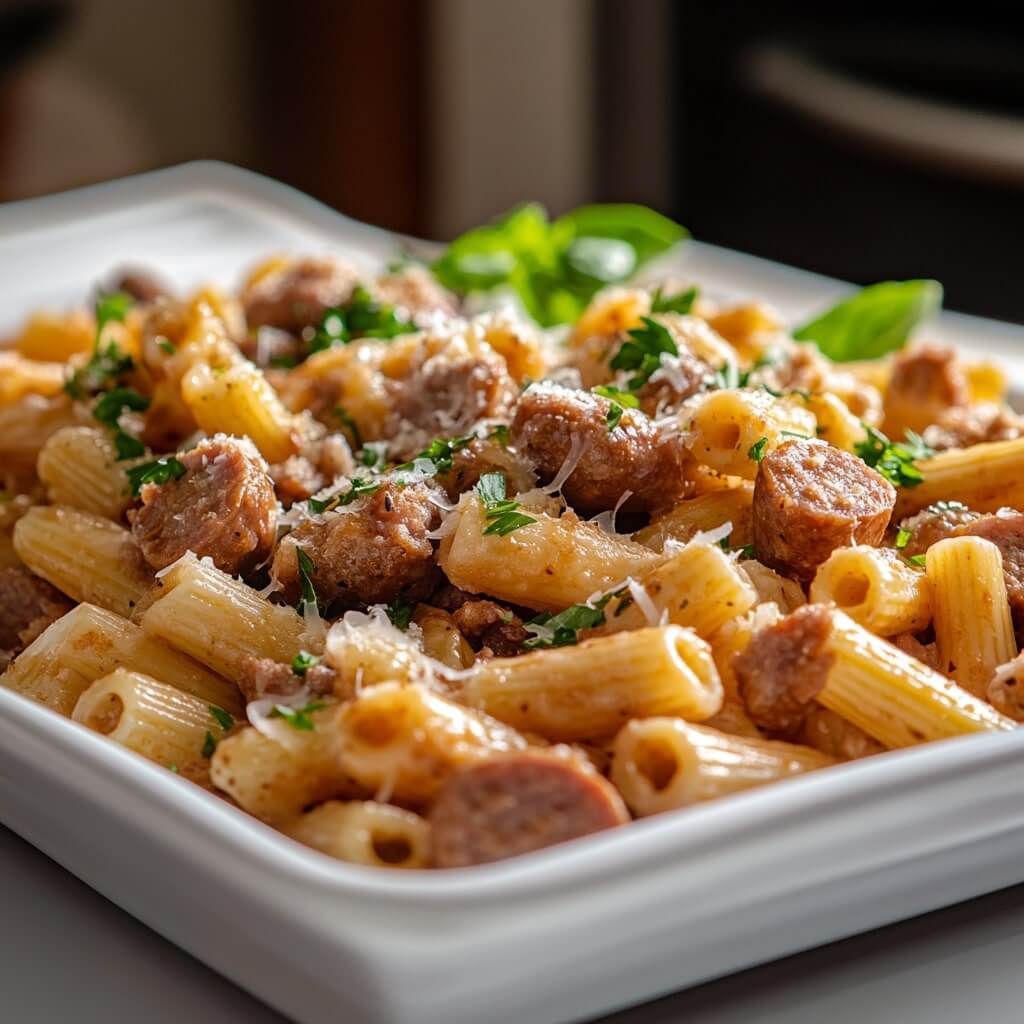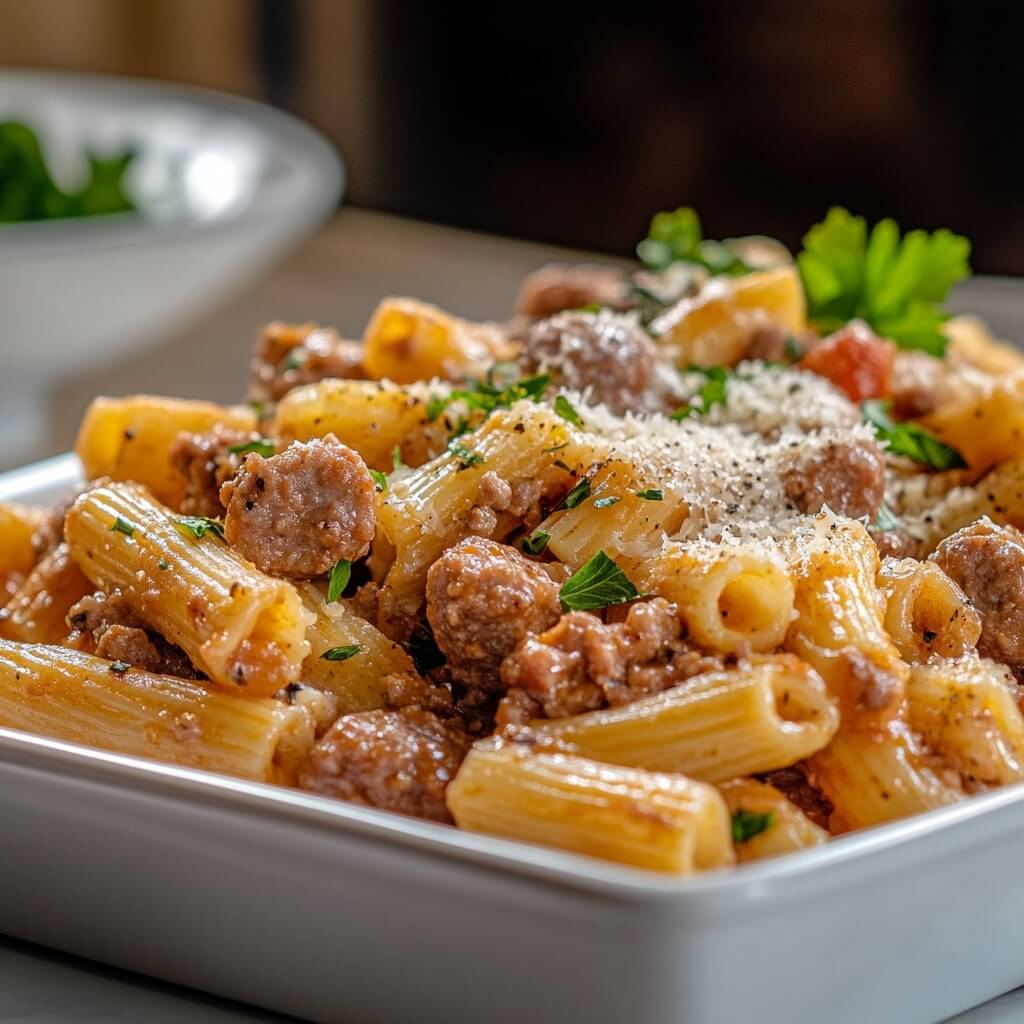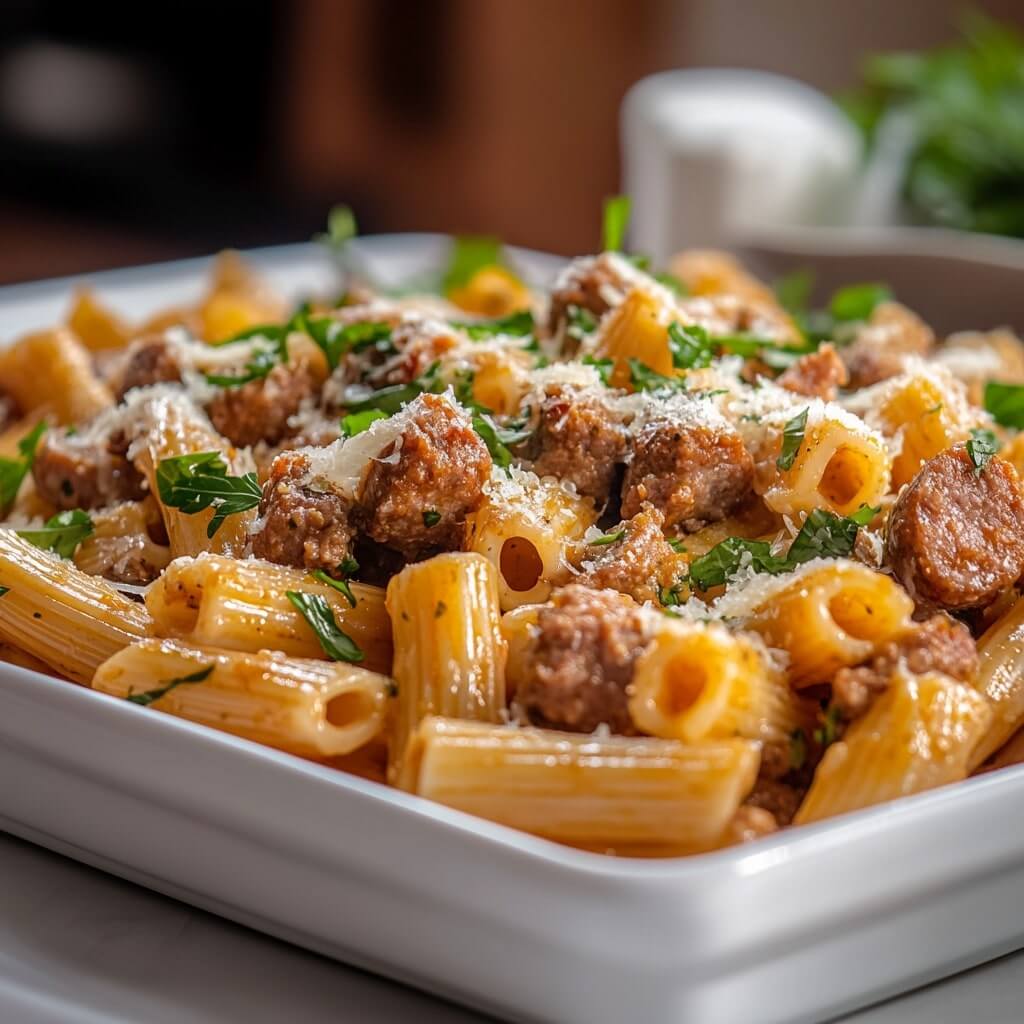Italian Sausage Pasta is a comforting, delicious dish that brings a rich blend of flavors to the table. Whether you’re making it for a family dinner or meal prepping for the week, this pasta recipe will surely become a household favorite. In this guide, I’ll share everything you need to know to make this dish not only simple but bursting with flavor.
What is Italian Sausage Pasta?
Italian Sausage Pasta is a savory, hearty dish that pairs the bold flavors of Italian sausage with a rich, homemade tomato-based sauce. The sausage is browned and combined with onions, garlic, and aromatic herbs to create a meat sauce that envelops your pasta. What sets this dish apart is the careful balance of textures and flavors—rich, spicy, and slightly sweet, all melded into one satisfying bite.
Why Choose Italian Sausage?
Italian sausage is the star ingredient of this recipe. It brings a unique combination of savory, slightly spicy, and sometimes sweet flavors to the table, making it much more exciting than a regular ground beef or turkey meat sauce.
There are a few types of Italian sausage you can choose from:
- Sweet Italian Sausage: This version contains a blend of fennel, garlic, and other mild spices for a sweeter flavor.
- Hot Italian Sausage: If you like a kick, this one comes with red pepper flakes for heat.
- Chicken or Turkey Sausage: For a leaner alternative, opt for turkey or chicken sausage, which still carries the Italian seasoning but with less fat.
If you’re after a leaner version, turkey or chicken sausage can be a great option. But if you want the classic, rich flavor, go for traditional pork sausage. Either way, you’ll get that hearty Italian taste.

Ingredients You’ll Need for Italian Sausage Pasta
For the Italian Sausage Pasta, you’ll need the following ingredients to create a rich, flavorful dish:
- 2 pounds ground Italian sausage (mild or hot)
- 1 small onion, chopped
- 4 cloves garlic, minced
- 1 (28-ounce) can diced tomatoes (preferably fire-roasted for added flavor)
- 2 (15-ounce) cans tomato sauce
- 2 (6-ounce) cans tomato paste
- 2 cups water
- 3 teaspoons dried basil
- 2 teaspoons dried parsley
- 1 1/2 teaspoons brown sugar (optional, can be omitted for a less sweet sauce)
- 1 teaspoon salt
- 1/4-1/2 teaspoon crushed red pepper flakes (adjust based on your spice preference)
- 1/4 teaspoon fresh ground black pepper
- 1/4 cup red wine (or tomato juice if you prefer a non-alcoholic option)
- 1 pound spaghetti noodles (or your choice of pasta)
- Optional: Parmesan cheese and fresh parsley for garnish
Why These Ingredients Matter
Each ingredient in this recipe plays a key role in creating a flavorful, balanced dish:
- Italian Sausage: It’s the heart of the sauce, bringing richness and flavor.
- Tomatoes: The combination of diced tomatoes, tomato sauce, and paste creates a thick, flavorful base.
- Herbs and Spices: These are essential for layering flavor. Basil and parsley provide an aromatic touch, while the crushed red pepper adds just the right amount of heat.
- Red Wine: Adding red wine deepens the flavor of the sauce, making it more robust. If you’re not using wine, tomato juice is a great alternative, though the taste will be a little milder.
Instructions
Follow these simple steps to prepare your Italian Sausage Pasta:
-
Cook the Italian Sausage
In a large, heavy stockpot or skillet, heat a bit of olive oil over medium heat. Add the ground Italian sausage, breaking it up into small crumbles with a spoon or spatula. Continue cooking until the sausage is browned and fully cooked through. Once cooked, add the chopped onion and sauté until the onion is softened and translucent, about 5 minutes. Add the minced garlic and cook for an additional 1-2 minutes until fragrant. -
Add the Sauce Ingredients
Stir in the diced tomatoes, tomato sauce, tomato paste, and water. Mix everything well to combine. Next, add the dried basil, dried parsley, brown sugar (if using), salt, crushed red pepper flakes, and black pepper. Stir everything together and bring the sauce to a low boil. -
Simmer the Sauce
Once the sauce starts to boil, lower the heat to a simmer. Allow the sauce to cook for at least 30 minutes (an hour is even better for deeper flavor), stirring occasionally. If you’re adding red wine, stir it in during the last 10 minutes of simmering. Taste the sauce and adjust seasoning as needed. -
Cook the Pasta
While the sauce is simmering, bring a large pot of salted water to a boil. Cook the spaghetti (or your pasta of choice) according to package instructions, until al dente. Drain the pasta, reserving 1 cup of pasta water for later if needed to adjust the sauce consistency. -
Combine Pasta and Sauce
Once the sauce has finished simmering, taste and adjust the seasoning one last time. Serve the pasta by plating the noodles and ladling the hot sausage sauce over the top. For extra flavor, sprinkle with freshly grated Parmesan cheese and garnish with chopped fresh parsley or basil. -
Serve and Enjoy
Serve your delicious Italian Sausage Pasta with a side of garlic bread or a fresh Italian salad for a complete meal.
Tips for Cooking Italian Sausage Pasta
Before jumping into the cooking steps, here are some tips to elevate your Italian Sausage Pasta:
- Use Fresh Herbs When Possible: While dried herbs work great, fresh basil and parsley add an extra punch of flavor.
- Don’t Overcook the Sausage: Browning the sausage perfectly is key. You want a crispy, caramelized texture without overcooking it, which can make it dry.
- Season the Pasta Water: Always season your pasta water with salt. This step ensures that the pasta itself is flavorful, preventing the dish from tasting bland.
How to Make Italian Sausage Pasta: A Step-by-Step Guide
Making this Italian Sausage Pasta is quick and easy. Follow these simple steps to create a dish that will impress your family and friends.
Step 1: Brown the Sausage
Start by heating a large skillet or pot over medium heat. Add the Italian sausage, breaking it apart with a spoon or spatula. As it cooks, crumble it into small, bite-sized pieces. Once the sausage is browned and cooked through, add in the finely chopped onion. Sauté for 3–4 minutes, until the onion becomes soft and translucent.
Step 2: Add the Garlic and Tomatoes
Next, add the minced garlic and cook for about 1 minute, just until fragrant. Then, stir in the diced tomatoes, tomato sauce, and tomato paste. Add a splash of water to adjust the consistency of the sauce—if it’s too thick, a little more water helps loosen it up.
Step 3: Season the Sauce
To create a well-balanced sauce, stir in the dried basil, parsley, salt, pepper, and red pepper flakes (if you like it spicy). Add the brown sugar to cut through the acidity of the tomatoes, and then pour in the red wine. Stir everything together and bring the sauce to a simmer. Let it cook on low for at least 30–45 minutes, stirring occasionally, so the flavors can meld.
Step 4: Cook the Pasta
While your sauce is simmering, cook the pasta according to the package instructions. Make sure to salt the water generously before adding the pasta—this is the only chance to season the noodles themselves. Cook the pasta until it’s al dente, then drain, reserving a cup of pasta water in case you need to adjust the sauce later.
Step 5: Combine and Serve
Once the pasta is done, toss it with the sauce, making sure the noodles are well-coated. If the sauce is too thick, you can add a little reserved pasta water to reach the desired consistency. Top the dish with freshly grated parmesan cheese, chopped parsley, or basil for a pop of color and flavor.
Serve your Italian Sausage Pasta with a side of garlic bread and a fresh salad for a complete meal!









